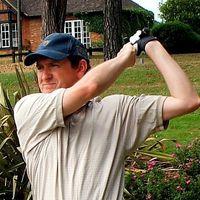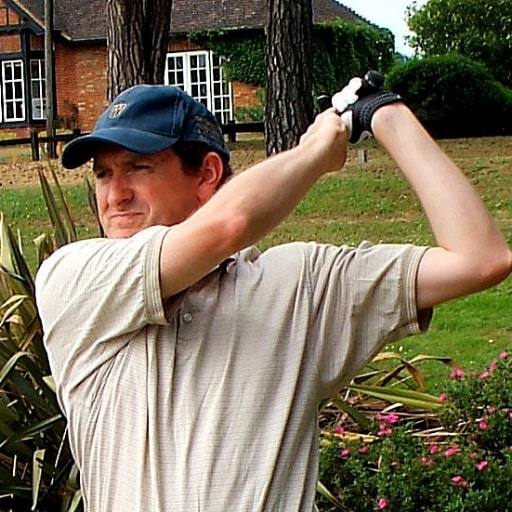New To Golf Or Struggling With The Sport's Language? This Explainer Of Common Golfing Terms Will Ease Your Confusion
We explain some common golf terms that the beginner golfer may encounter but not always know, such as dormy, call-up hole, green in regulation and so on


If you're new to golf – or an existing player who struggles with the sport's terminology – this alphabetical list of common golf terms will help you come to terms with the game's sometimes confusing parlance...
Bandit: Derogatory term for one who has a higher handicap than their play justifies, used to suggest the player is deliberately seeking an unfair advantage,
Birdie: A score of one-under-par on a hole.
Bogey: Modern usage is a score on a hole of one-over-par. The original meaning of bogey was a score that a good golfer should aim for on the hole.
Call up hole: A short hole where, in order to speed up play, when players are on the green and there is a group behind waiting on the tee, those on the green should mark their balls and call up the group behind to play their tee shots. While the group behind is walking to their shots, those on the green putt out.
Dogleg: A hole which does not have a fairway which runs straight to the green, but has two straight sections of fairway joined at an angle.
Dormy: When someone in a match is up by as many holes as there are left they are ‘dormy’. If the match is a knockout which can go to sudden death it cannot ever be dormy. A dormy house is accommodation at a golf club where players can sleep.
Subscribe to the Golf Monthly newsletter to stay up to date with all the latest tour news, equipment news, reviews, head-to-heads and buyer’s guides from our team of experienced experts.
Eagle: A score of two-under-par on a hole.
Fairway: Closely mown section of course between tee and green.
Front nine, back nine: The front nine are the first nine holes on an 18-hole golf course; the back nine are holes 10-18. The two halves are also called the Out and Back nines. The Out nine being the first nine holes.
Gimme: A putt so short than an opponent concedes it. It still counts as a shot, but the golfer does not have to play it.
Green: The putting surface.
Green in regulation: The par for a hole always presumes the golfer takes two putts, so to make a GIR the player has to get the ball on the green in at least two shots fewer than par.
Gross score: Score before it is adjusted for handicap. After the handicap has been applied it becomes the nett score.
Halfway hut: Place where players can buy drinks and snacks, so called as its often positioned halfway round a course.
Honour: The person with the lowest score on the previous hole has honour, so they tee off first.
Links: A links course is normally coastal and is laid out over sandy subsoil with the fairways often rumpled in appearance. The Open Championship is always played on a links course. Links used to simply mean a golf course, which is why some courses which are not laid on linksland were still called links.

Muirfield is one of the UK&I's finest links courses
Match play: A match which is decided by who wins the most holes, rather than who has the lowest aggregate score at the end.
Medal: A golf competition decided by the total number of shots, either nett or gross, that each player takes.
Member’s bounce: A surprising bounce of the ball that improves the ball’s final position.
Mixed competition: A competition open to both sexes.
Mulligan: A shot which is allowed to be replayed without penalty. Mulligans are against the rules of golf, but are used in some social games.
Nineteenth hole: Nickname for the bar in the clubhouse.
Out of bounds: Area beyond the course's designated boundaries where play is prohibited.
Par: The target score on a hole for a scratch golfer. Typically, in club golf, holes up to 249 yards are par 3, 250-474 yards par 4, and over 475 yards is a par 5.
Pick up: This literally means pick up the ball and not continue playing a hole, for example when a player in a Stableford can no longer score points.
Pin: The pole that holds the flag used to indicate where the hole is.
Play through: If the group ahead are playing slower than your group and holding you up, they should invite the group behind to, in effect, overtake them by standing aside and letting the others play through. This invitation can be accepted or rejected.
Rough: Grass deliberately allowed to grow long, normally bordering the fairway.
Scratch: A scratch competition is one played without handicaps being used. A scratch golfer is one whose handicap is 0.
Shotgun start: A competition where players all start at the same time, but on different holes and play all the holes in the order from where they start.
Stableford: Competition devised by Dr Stableford whereby players score points on each hole depending upon their score, as opposed to scoring by Medal play.
Tee: The tee box is where the player begins a hole, normally just abbreviated to ‘tee’. A tee is also a peg on which the ball is placed when played from the tee box.
Up and down: If you hole the ball in two shots from near the green then that is an up and down. The first shot hits the ball up onto the green, the second down into the hole.
Contributing Writer Roderick is the author of the critically acclaimed comic golf novel, Summer At Tangents. Golf courses and travel are Roderick’s particular interests. He writes travel articles and general features for the magazine, travel supplement and website. He also compiles the magazine's crossword. He is a member of Trevose Golf & Country Club and has played golf in around two dozen countries. Cricket is his other main sporting love. He is also the author of five non-fiction books, four of which are still in print: The Novel Life of PG Wodehouse; The Don: Beyond Boundaries; Wally Hammond: Gentleman & Player and England’s Greatest Post-War All Rounder.
